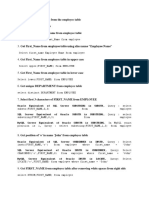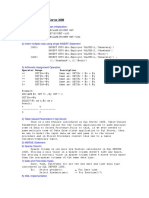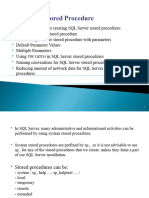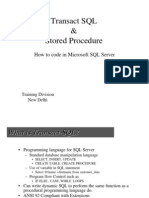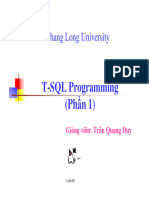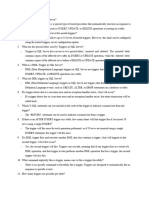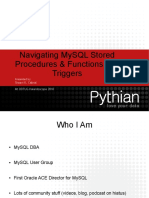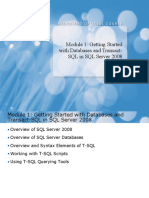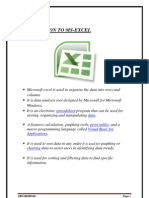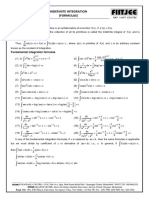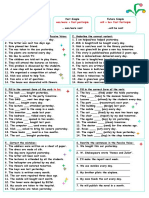0% found this document useful (0 votes)
91 views7 pagesView - Triggers-Function
1. User-defined functions and stored procedures allow users to define reusable code to perform common operations in SQL Server. Functions can return a scalar or table value, while stored procedures can accept parameters and return multiple values or status codes.
2. Stored procedures accept parameters, contain T-SQL statements to perform actions like calculations, and return status or output parameters. They are created using the CREATE PROCEDURE statement.
3. Triggers automatically execute in response to events like data modifications or logins. DML triggers fire on INSERT, UPDATE, DELETE and use the INSERTED and DELETED tables to access changed data. DDL triggers react to statements like CREATE/ALTER/DROP and logon triggers fire on
Uploaded by
dang le ducCopyright
© © All Rights Reserved
We take content rights seriously. If you suspect this is your content, claim it here.
Available Formats
Download as PDF, TXT or read online on Scribd
0% found this document useful (0 votes)
91 views7 pagesView - Triggers-Function
1. User-defined functions and stored procedures allow users to define reusable code to perform common operations in SQL Server. Functions can return a scalar or table value, while stored procedures can accept parameters and return multiple values or status codes.
2. Stored procedures accept parameters, contain T-SQL statements to perform actions like calculations, and return status or output parameters. They are created using the CREATE PROCEDURE statement.
3. Triggers automatically execute in response to events like data modifications or logins. DML triggers fire on INSERT, UPDATE, DELETE and use the INSERTED and DELETED tables to access changed data. DDL triggers react to statements like CREATE/ALTER/DROP and logon triggers fire on
Uploaded by
dang le ducCopyright
© © All Rights Reserved
We take content rights seriously. If you suspect this is your content, claim it here.
Available Formats
Download as PDF, TXT or read online on Scribd
/ 7





